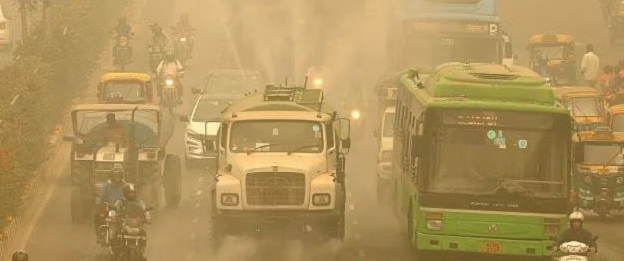State of Global Air Report 2024: India’s Situation and Measures (GS Paper 3, Economics)

Context
- The State of Global Air (SoGA) Report 2024 highlights that air pollution has become the second leading global risk factor for death.
- This report, released by the Health Effects Institute (HEI) in partnership with UNICEF, underscores the critical need for comprehensive measures to address air pollution.
- Here, we examine India’s air pollution scenario and the steps being taken to mitigate its impact.
India’s Situation in Air Pollution
Key Statistics:
- Deaths Due to Air Pollution: India reported 2.1 million deaths due to air pollution, the highest globally.
- Impact on Children: India reported the highest number of pollution-linked deaths in children under five, with at least 169,400 deaths.
- Seasonal Impact: Air pollution in India worsens during the winter, with large parts of the country blanketed in smog.
Inadequate Measures
Efforts to combat air pollution in India have often been reactive and insufficient:
- Short-term Solutions: Measures like spraying water to reduce dust and implementing the odd-even vehicle scheme have had limited impact.
- Health Linkage: There has been a failure to adequately link pollution with public health, leading to insufficient long-term strategies despite clean air plans in many cities.
Impact on Children
Children are particularly vulnerable to air pollution due to their higher air intake per kilogram of body weight, developing organs, and weaker defense mechanisms. Exposure to pollutants increases the risk of:
- Asthma
- Upper respiratory tract infections
- Childhood leukemia
- High blood pressure
Facts and Figures
- Global Deaths: China and India together accounted for over 55% of global air pollution-related deaths in 2021.
- Ozone Exposure: 489,000 deaths globally were attributable to ozone exposure in 2021, with nearly 50% (237,000) of these deaths occurring in India. Short-term ozone exposure exacerbates asthma and respiratory symptoms, while long-term exposure is linked to Chronic Obstructive Pulmonary Disease (COPD).
Hope and Progress
Since 2000, there has been progress:
- Reduction in Child Deaths: The global death rate linked to air pollution among children under five has decreased by 53%.
- Improved Conditions: This reduction is attributed to increased access to clean cooking energy, better healthcare, improved nutrition, and heightened awareness.
- Effective Policies: Stricter air quality policies and the promotion of hybrid and electric vehicles in regions like Africa, Latin America, and Asia have shown measurable benefits.
Lessons for India
With 42 out of the 50 most polluted cities globally, India faces a significant challenge:
- Awareness: A 2022 study indicated that even municipal employees in India have low awareness of air pollution’s link to serious health conditions like cancer and heart diseases.
- Priority on Health: To address this issue effectively, India must prioritize the health of its citizens, particularly children, in its pollution control strategies.
Conclusion
- The SoGA report emphasizes the need for comprehensive and sustained action to combat air pollution.
- Prioritizing public health, particularly of the most vulnerable groups, is essential in developing effective solutions to this pressing issue.
- The recognition of the severe impact of air pollution and the implementation of long-term, health-focused strategies are critical steps towards mitigating this global risk factor.


